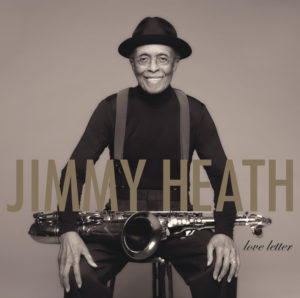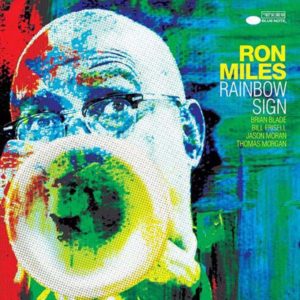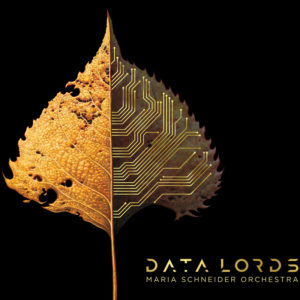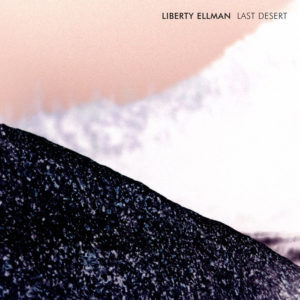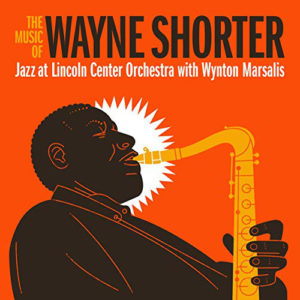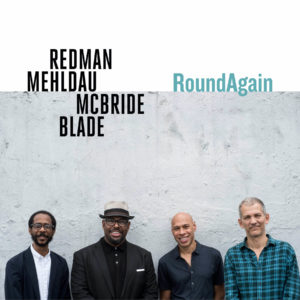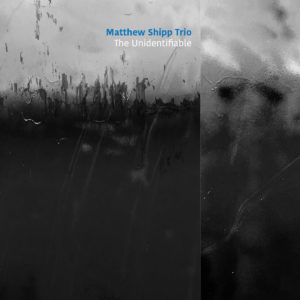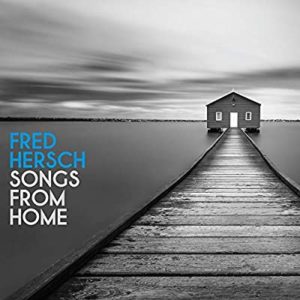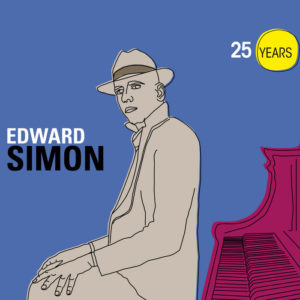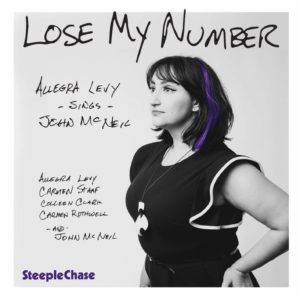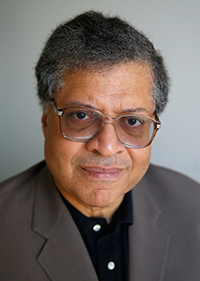With a couple of (qualified) exceptions, there’s not a whole lot on this year’s list that will wake the neighbors or set off cowbells and car alarms. This, somehow, didn’t feel like the year for that kind of noise, though there sure was a whole lot of unwelcome noise pounding on the walls of wherever we hunkered down to Stay Safe. I would like to think that for every two or three people shut in by the pandemic who could do nothing but keep some form of broadcast news on in every room of their houses, there were one or two others determined to find in music, or any other art, some deliverance from the relentless meanness of this year. Maybe that explains why most of the items listed below emit vibes owing to the ruminative, the elegiac, even, at times, the shadowy and ethereal. If you needed swinging, swaying and rocking, you could find all that, too and I wish all three were more conspicuous than they appear to be on this list. My own impulse for breadth and adventure is otherwise mostly indulged here with the hope that you all will do likewise.
One question for further study, and by now it’s a familiar one: Just what the heck is an album these days? And is that really how you all still listen to music these days? I know that’s two questions and I’m not going to go too deep into the weeds on either of them. Discuss. We’ll talk later.
1.) Jimmy Heath, Love Letter (Verve) – Even before he began recording this gleaming array of ballads two days before his 93rd birthday and polished it to a fine gloss weeks before his death this past January, Jimmy Heath seemed infused with a magical elixir whose ingredients were known only to him. I remember watching him conduct a concert of the Queens Jazz Orchestra en route to his 90th year and his compact, five-foot-three-inch frame seemed as agile as ever; plus he was blowing his tenor saxophone with as much force (if not velocity, but you can’t have everything) as he did when he was a badass young composer, arranger and leader in the 1950s. In each of these tracks, the power of Heath’s playing emerges in its conceptual energy, the soft glow and austere intricacy of his thematic variations, whether on Billie Holiday’s “Don’t Explain” and “Left Alone,” whose lyrics, written by Holiday for Mal Waldron’s melody, are tenderly, fastidiously enacted by Cecile McLorin Salvant; or on Heath’s own pieces, including “Inside Your Heart,” “Fashion or Passion” and “Ballad From Upper Neighbors Suite.” The formidable supporting cast comprises Salvant, pianist Kenny Barron, vibraphonist Monte Croft, bassist David Wong, guitarist Russell Malone, drummer Lewis Nash, vocalist Gregory Porter (featured on “Don’t Misunderstand,” a tune Gordon Parks wrote for his 1972 feature, Shaft’s Big Score) and Wynton Marsalis, appropriately bringing his trumpet along for “La Mesha”, composed by Heath’s onetime confrere Kenny Dorham. Though properly regarded, to quote Gary Giddins’ liner notes, as a “stunningly elegant last testament,” Love Letter sure doesn’t feel final; rather as though its leader is summoning a hard jolt of giddy-yap for the next album. Which is the kind of monument we’d all like to leave behind.
2.) Ron Miles, Rainbow Sign (Blue Note) – The title track immediately conjures up references to the biblical admonition cited at the conclusion of James Baldwin’s The Fire Next Time. (I’ll just let you look it up, if you don’t already know it.) But while such a connection seems especially timely this year, especially for a follow-up to cornetist Miles’ 2017 album I Am a Man given that title’s reference to the signs carried by striking Memphis garbage workers when Martin Luther King Jr. made his ill-fated stand with their picket lines, the polychromatic music on this Blue Note debut is more contemplative and probing than its immediate predecessor. The gorgeous mosaics forged by Miles’ crystalline musings, guitarist Bill Frisell’s laser-light interjections, pianist Jason Moran’s stealthy adornments, bassist Thomas Morgan’s vertically inclined strumming and drummer Brian Blade’s sandman grinding make for a graceful, variegated sound that is deceptive in its seeming calm. The music may secretly wish to cry out, but mostly unravels in a kind of sang-froid wariness for whatever’s ahead. The presence of spirits, including those who have departed this very year, are sensed more than heard outright. As much as Miles’ music fixes your attention overall, tracks like “The Rumor,” “Custodian of the New,” “A Kind Word” and “Like Those Who Dream” also makes you restless with the known world’s prevailing dread. You’re ready to move somewhere, anywhere away from Fear Itself, even if you’re not entirely sure where and when you’re due to arrive.
3.) Aaron Diehl, The Vagabond (Mack Avenue) – The fifth album featuring Cecile McLorin Salvant’s onetime/sometime accompianist displays what may well be his most comprehensive immersion in musical tradition, whether modernist or post-modernist . Thus, both Prokofiev (“March from Ten Pieces for Piano, Op. 12”) and Philip Glass (“Piano Etude No. 16”) are in the house for interpretive tweaking. But so are Sir Roland Hanna (“A Story Often Told, Seldom Heard ”) and John Lewis (“Milano”), whose rhythmic poise and lissome riffing find in Diehl a stunningly worthy exponent. With his own compositions, Diehl makes his own way through the motifs and dynamics of jazz piano history. Hence the deft negotiation of space and time on “Park Slope” and “Kaleidoscope Road,” reminiscent of both Lewis and Ahmad Jamal in the latter’s latter-day period. His years of comping behind Salvant have bestowed upon him ears big enough to listen, respond and gently steer his conversations with bassist Paul Sikivie and drummer Gregory Hutchinson. The whole enterprise emits a soft glow of intimacy braced by a subtle urgency for wider vistas. It leaves you with no doubt whatsoever that Diehl, in whatever context, has more of those in store.
4.) Maria Schneider Orchestra, Data Lords (Artists Share) — Within every tender lament for a lost time, there is rage at whatever’s shoving it aside. Most times, that anger is implied. But Schneider, on her first album since the masterly 2015 tone poem, The Thompson Fields , takes her regular patrons aback somewhat with this Janus-faced inquiry into what we once only hypothetically regarded as “cyberspace” has done to our collective minds and hearts. The first disc, “The Digital World,” leans hard on the foreboding, the invasive and the insidious in evoking what the composer-arranger-conductor characterizes as concurrent erosions of public and private space. “Don’t Be Evil” piquantly appropriates its title from one of Google’s maxims to its employees and weaves into its thematic progressions the familiar melody of “Taps.” One isn’t used to this kind of acid spurting out from Schneider’s orchestrated tapestries and at first it seems as if she’s swinging too wildly at her digitized demons.. But what makes this particular recording stand out, both in the first volume and in the second, more typically Schneider-esque volume, “The Natural World,” is the considerable room she’s giving to her musicians to run wild and unfettered on both acoustic and electronic instruments. One could cite as examples tenor saxophonist Donny McCaslin’s shape-shifting wails and trumpeter Greg Gisbert’s electronically enhanced narratives making their way through “CQ, CQ, Is Anybody There?” or how, on the subsequent “Sputnik,” Scott Robinson’s baritone sax climbs the registers in tandem with the rest of the horns to replicate both the relative barrenness of outer space (towards which the orchestra likewise urges you, later on, to “Look Up”) and the lengthening chain of satellites playing pitch-and-catch with our unending data streams. Or how guitarist Ben Monder, pianist Frank Kimbrough, accordionist Gary Versace, reed player Steve Wilson and all the others contribute so distinctively to their leader’s vision of awe, terror and hope in the ongoing percussive shock of the new in conflict with whatever remains of biology, oxygen, water and blood. The more you listen to the whole thing, the less certain you are about where those two worlds it explores begin, end…or, even, merge.
5.) Liberty Ellman, Last Desert (PI) – Maybe the best way to walk into Ellman’s fifth album as a leader is to imagine the guitarist sitting with friends at a table on the first track — conveniently labeled “The Sip” for the purposes of our analogy – and just to make the afternoon lively, opens up a conversation with a few random phrases, each reaching around for some connection with one of the others hanging out: trumpeter Jonathan Finlayson, saxophonist Steve Lehman, bassist Stephan Crump, drummer Damion Reed and tuba player (tubaist?) Jose Davila. Since none of these guys are strangers to each other (one or all of them has at some point played with each other on other PI albums), it’s easy enough for outsiders to follow along, even if there doesn’t always seem to be a steady beat to hang on to. So you listen to what each of them contributes and what continually impresses is how lucidly the “talk” seems to flow, sometimes with Ellman augmenting Lehman’s ideas by either sliding alongside in harmony or hanging back with Reed as Lehman elaborates with mounting intensity. Davila’s tuba steps out of the background because it can’t keep quiet for long and Finlayson, now barely able to contain himself, completes somebody else’s premise with sparkly ingenuity. This is all a bone-simple way of saying that this album is mostly and ultimately about group interaction and however you want to listen, talk back or even dance along can only carry the conversation to another level, or tangent.
6.) Jazz at Lincoln Center Orchestra with Wynton Marsalis, The Music of Wayne Shorter (Blue Engine) – I can remember a time, maybe a decade-and-a-half before this landmark 2015 concert, when things were nowhere near as collegial between the mercurial, enigmatic Mr. Shorter and the “uptown” jazz classicists of Lincoln Center. The details of this impasse are now blurry to me and, I suppose, everybody involved. All I knew, even then. was that sooner or later there had to be some rapprochement between the Imperial City’s dominant jazz institution and the music’s greatest living composer. Still, going in, one wondered whether Shorter’s oeuvre, most of which was configured for small combos, would be adequately retrofitted for the demands of a 15-piece band. David Weiss pulled it off nicely with his tribute ensemble two years earlier. But Weiss didn’t have The Man Himself playing alongside them the way Wynton’s outfit did that night. The possibilities seemed rife for tension between J@LCO’s imperative to swing and Shorter’s impulse towards introspection. And from the jump – a Victor Goines arrangement of “Yes or No” from Shorter’s 1964 album, Juju — there was a possibility that Shorter would be overpowered by the band’s might. But the deeper their dialogue progressed, the more invigorated Shorter and the band seemed by the exchange. After a while, it became apparent that the tension between these sensibilities wasn’t something to be resolved or overcome during the show; the tension was the show. And through their smart, measured and diligent exchanges of ideas and invention, Shorter and the orchestra managed to make each of these works – “Lost,” “Teru”, “The Three Marias,” even the knotty “Contemplation” sound staggeringly fresh and (very much) alive.
7.) Joshua Redman, Brad Mehldau, Christian McBride & Brian Blade, Round Again (Nonesuch) – Hard to believe that this is only the second album recorded by this celestial body and that its predecessor (Mood Swing) was released way back in 1994. Somehow you’d like to believe in a world where this band of Super Friends could have hung together for that whole 26 years while continuing to veer off occasionally for their respective projects. But that deprives us of the illuminating perspective of their cumulative growth between those albums – and the attendant revelation that they now sound fresher and more inventive, individually and together, than they did when they were daring young tyros. Redman is the nominal leader here, as he was back in Bill Clinton’s first term. But, having just edged past 50, the erstwhile swashbuckling prodigy from Harvard here sounds more authoritative and more relaxed, giving his bandmates plenty of room on the marquee and on these sessions to share with the class everything they’ve learned since they first played with fireworks together. In pianist Mehldau’s case, it’s the spherical sense-of-play on “Moe Honk” that gives his still-frequent cohort Redman another opportunity to light up the sky with his own ballistic spinoffs while McBride, now as prodigious a bandleader as he is a bassist, flashes both his virtuosity and ingenuity on his “Floppy Diss.” Perhaps the most surprising contributions come from Blade, whose trap-set back in the day emitted enough rumbustious flash and bravado to compete with Redman’s own magnetism. Here Blade sounds relatively circumspect and cagey, having figured out as the canniest veterans eventually do, that what you don’t fill in is as important as what you do. Redman’s party favor for the gathering is “Silly Little Love Song,” a soulful romp that gives all four guys a case of the grins as it also seems to be waiting for someone not named Sir Paul McCartney to write lyrics for it. (No knock intended. He’d probably suggest someone else to do it anyway.)
8.) Matthew Shipp Trio, The Unidentifiable (ESP-Disk) – It’s tough to stay an angry young man of progressive jazz piano when you’ve turned 60. But age will never deter Shipp’s impetus to color outside the lines. The older he gets, the more apparent it becomes that few people now living can lay down as many dense clusters of chords in as many combinations as he can. With bassist Michael Bislo and drummer Newman Taylor Baker (I think this is their fifth year together, but one is never totally sure of such things), Shipp is expanding the possibilities for jazz piano trio while at the same time allowing his more lyrical side to gradually emerge from behind his polychromatic walls of sound. The title track provides the best vantage point for where Shipp is right now: a Tyner-esque roller-and-tumbler propelling Shipp’s hands back and forth across his keyboard, shagging and snapping eccentric, oblong riffs that Bislo and Baker field with grace and idiosyncrasy. Baker, by the way, figures prominently on a series of tracks labeled, “Virgin Psych Space,” which I am taking to mean exactly what it says it means. There is even (merciful heavens!) a samba, “Regeneration,” that should someday be a global dance phenomenon when the world figures out how to colonize Venus. That this is among the more satisfying albums of Shipp’s prolific career won’t slow his roll. He’s never satisfied. Besides, angry young men can often evolve into valuable curmudgeons. Shipp, trust me, is already there.
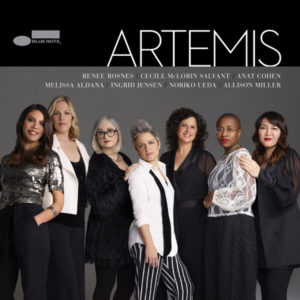
9.) Artemis, Artemis (Blue Note) — Conventional wisdom insists that supergroups never work for the simple – or simplistic — reason that star players can’t, by definition, be team players. Maybe that’s true most of the time. And maybe that’s why the seamless interplay of this septet’s members – pianist Renee Rosnes, clarinetist Anat Cohen, saxophonist Melissa Aldana, trumpeter Ingrid Jenson, bassist Noriko Ueda, drummer Allison Miller and vocalist Cecile McLorin Salvant – is a surprise large enough to grab your lapels at the outset. What keeps you involved are the different ways each track hugs and tugs at the core of its respective composition, economy without restraint, minimalism with soul. They all play so well with each other that it’s difficult to single any of them out. But as quarterback for this all-star all-woman team, Rosnes also does most of the arrangements and her bold, slow-hand reimagining of Lee Morgan’s four-on-the-floor burner “The Sidewinder” along with her incisive collaboration with Cohen on arranging the latter’s “Nocturno” provide sufficient evidence that this contingent has far more on its mind, and in its quiver, than Making A Point to male supremacists. She and the rest of the band give Salvant a sultry, multi-dimensional frame for Rocco Accetta’s “Cry, Buttercup, Cry.” Jensen applies unexpectedly deeper shadows in her arrangement of “The Fool on The Hill” while Miller (“Goddess of the Hunt”), Aldana (“Frida”) and Ueda (“Step Forward”) make their own striking contributions to the repertoire of this road-tested murderer’s row.
10.) Fred Hersch, Songs From Home (Palmetto) – Not long after the Black Swan of pandemic first locked us out of our schools, churches, gyms, theaters and interstates, Hersch, sheltering in his rural Pennsylvania home, brought some added light into his Facebook followers’ afternoons with his “Tune of the Day’ live piano recitals from his living room. Call this then, “Tune of the Day: The Album,” a ten-track compilation of classic standards (“After You’ve Gone,” “Get Out of Town,”) “contemporary pop” hits (“Wichita Lineman, “All I Want”), originals (“Sarabande,” “West Virginia Rose”) and even a folk tune (“The Water Is Wide”). You are transfixed and startled throughout by the stark intimacy and the quiet intensity of Hersch’s variations and ruminations. The wistfulness lurking within the presumptive gaiety of Lerner and Loewe’s “Wouldn’t It Be Loverly” is gently, resolutely funneled to the forefront of Hersch’s interpretation while Ellington’s “Solitude,” as familiar to a jazz lover as a tender old robe, becomes something far eerier and more profound given both the immediate present-day context and the implied long-term uncertainties towards whatever happens when the coronavirus is finally subdued. There’s not a single piece of this album – whatever albums are supposed to be right now – that we don’t badly need for solace, commiseration and grace. It wishes nothing more than that we stay safe, be well and hang on for dear life.
ARCHIVAL
1.) Edward Simon, 25 Years (Ridgeway)
2.) Ella Fitzgerald, The Lost Berlin Tapes (Verve)
3.) Frank Sinatra, Nice n’ Easy (Capitol)
VOCAL
Allegra Levy, Lose My Number (SteepleChase)
HONORABLE MENTION: Kurt Elling, Secrets are the Best Stories (Edition)
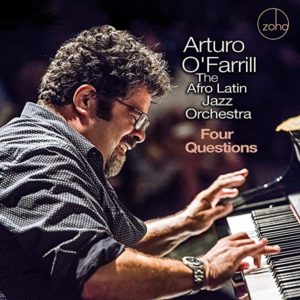
LATIN
Arturo O’Farrill & the Afro-Latin Jazz Orchestra, Four Questions (Zoho Music) 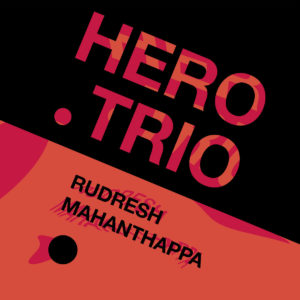
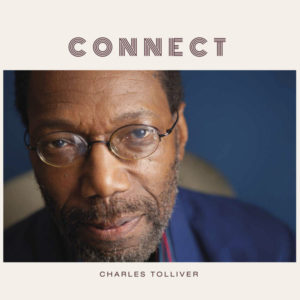
HONORABLE MENTION
Rudresh Manhanthappa, Hero Trio (Whirlwind), Charles Tolliver, Connect (Gearbox), Joe Farnsworth, Time To Swing (Smoke Sessions), Ambrose Akinmusire, On the Tender Spot of Every Calloused Moment (Blue Note), Orrin Evans and the Captain Black Big Band, The Intangible Between (Smoke Sessions)
